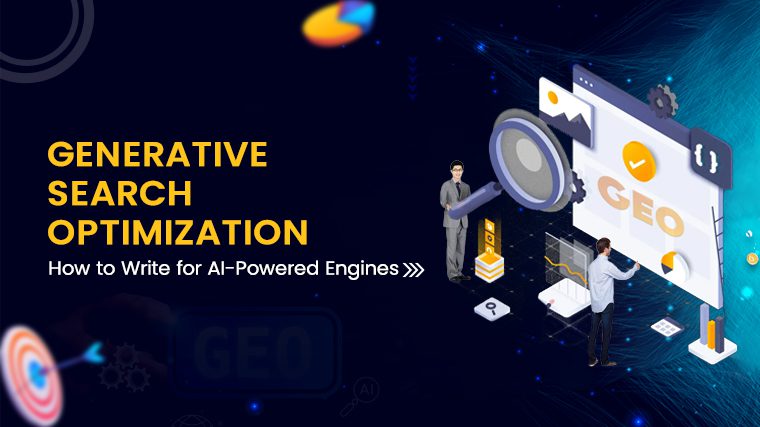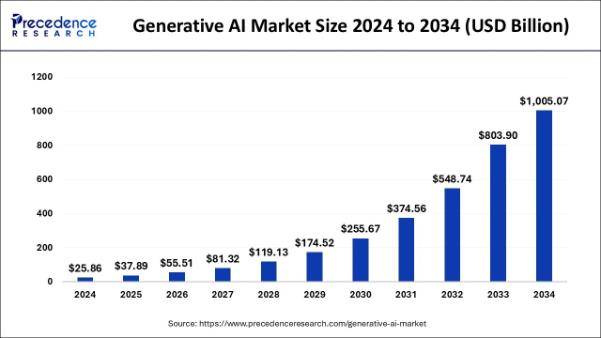
The integration of AI and SEO represents a dynamic and rapidly evolving force in today’s digital landscape, significantly transforming how content is created, optimized, and ranked in search engines. SEO used to talk about keyword density and backlinks alone, but that has changed; AI engines, especially the generative search features introduced by Google, will take a very different approach. Generative Search Optimization (GSO) is the art of building content that resonates with AI algorithms: it should add value to the users and enhance visibility. The present blog discusses the aspects of writing effectively for AI-driven search engines, along with some strategies that can allow one to stay one step ahead in 2025.
Understanding AI-Powered Search Engines
Google Search AI and other AI search engines use natural language processing (NLP) as well as machine learning techniques to investigate the user’s intent and come up with responses that sound closer to human speech. Unlike the traditional ones that have very strict and rigid keyword matching, these engines focus on context, relevance, and user experience. For instance, Google’s Search Generative Experience (SGE) provides summarized answers by pulling different sources together to provide a cohesive answer. This change throws light on the power of AI wields in transforming the way access to information takes place online.
For the success of content, the creators will have to optimize for AI’s holistic understanding of queries, which means focusing on user intent, structured data, and high-quality content that answers questions thoroughly.

The generative AI market is projected to surge from $25.86 billion in 2024 to a staggering $1,005.07 billion by 2034. This exponential growth highlights the transformative potential of AI across industries in the coming decade. (Source: Precedence Research)
Key Strategies for Generative Search Optimization
- Put User Intent and Conversational Content First
AI engines have an unparalleled understanding of queries in normal conversational language, like “What’s the best SEO strategy for 2025?” To place high on ranking, create content to match how human beings tend to speak. Have headings in the format of questions, give answers directly to the questions, and use a conversational tone. In other words, instead of “SEO Benefits”, try “Why Is SEO Important for Your Business?” The title should match how users actually interact with the AI-driven search.
Tip: Long-tail keywords, such as “SEO optimization AI tools for small businesses,” could be included naturally so as to catch specific queries.
- Use Structured Data and Schema Markup
Structured data plays an important role in AI engines to understand your content correctly. You can mark up the content with a schema, for instance, FAQ schema or How-To schema, to indicate to the search engine what your content is about. This may enhance the possibility of your content being included in AI-generated summaries.
For example, an SEO agency in India providing local services could benefit by using a LocalBusiness schema to declare its location and services so that AI can easily recommend them to the relevant users.
Resource: Read more about schema markup in Google’s Search Central, an authoritative document on content optimization.
- Generate Full and High-Quality Content
AI engines give precedence to content that provides an accurate answer. Thus, the goal should be to write in-depth articles deep into the topic, covering related questions and subtopics. For instance, an SEO service in India blog would need to discuss pricing, benefits, case studies, and trends in the Indian market.
To enhance the readability of your content by incorporating bullet points, tables, and visuals. Subheading text breaks improve scanning, as AI often pulls succinct sections for summaries.
- Employ Optimizations for E-A-T
Google’s E-A-T guidelines still play a vital role in AI-driven search. Cite credible sources, showcase the author’s credentials, and link to authoritative sites to prove expertise. Build authority through consistent, high-quality content, and earn trustworthiness through backlinks from reputable domains.
For example, SEO services in India can reasonably publish case studies with results that can be verified to earn trust both from AI engines and users.
- Adapt to Multimedia and Visual Search
AI engines are increasingly converting images, videos, and infographics into results. So, optimize visuals with descriptive alt text, captions, and file names containing keywords like “SEO optimization AI infographic”.
Pro Tip: Make short, fun videos explaining complex SEO concepts, since AI tends to prioritize dynamic content to engage users.
Conclusion
Generative Search Optimization is a new way to enhance digital visibility. Concentrating on user intent, structuring data, and generating content that is high-quality and optimally compliant with E-A-T will enable one to survive in the age of AI-powered search engines. The strength of AI is in offering exact and highly relevant answers; therefore, GSO is what ensures your content is at par with this intelligence. Whether you are an SEO service in India or a global brand, mastering GSO shall pave the way for joining your audience. The time is now to embrace AI-driven SEO to beat the clock tomorrow.
Make Your Content AI-Ready
Not sure how to write content that AI actually picks up? This guide breaks it down in simple way, so your content gets seen, ranked, and recommended.




